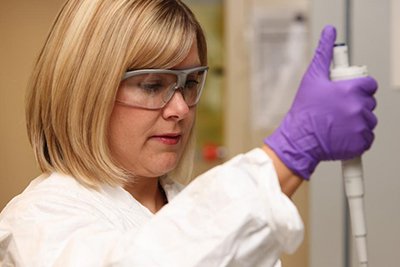Advancing Lead Exposure and Biokinetic Models
EPA researchers are advancing efforts to develop, apply, and deliver a suite of models that meet the specific needs of environmental risk assessors, contaminated site managers, public health officials, local communities, and other Agency partners.
The models simulate human exposures, intake, and uptake to lead from multiple environmental sources and estimate blood lead concentrations for scenario-specific analyses at local and national scales.
Current efforts focus on updating and applying models that address priority concerns including lead exposure risks from aging water infrastructure, contaminated soil and dust from past industrial practices, and conducting lead exposure risk assessments to meet cleanup goals and better protect children and other vulnerable populations.
Modeling to Inform National Health-Based Benchmarks for Lead
Stochastic Human Exposure and Dose Simulation (SHEDS)-Multimedia Model and the Integrated Exposure Uptake and Biokinetic (IEUBK) Model
EPA scientists, in collaboration with colleagues from other Federal Agencies, conducted an innovative probabilistic analysis for children’s multimedia lead exposures at a national scale. To do so, they coupled two EPA computer models—the Stochastic Human Exposure and Dose Simulation (SHEDS)-Multimedia Model and the Integrated Exposure Uptake and Biokinetic (IEUBK) Model.
Harnessing the strengths of both models, researchers were able to (1) consider the variability in blood lead levels across the U.S. population; (2) determine the relationship between daily average drinking water lead concentrations and blood lead levels for scenarios involving exposures to other media; and (3) determine relative contributions by media and exposure pathways to blood lead levels for different age groups and population percentiles. The work represents a significant advance in lead modeling and provides a strong scientific basis to guide national health-based benchmarks for lead.
- Fact Sheet: Children’s Lead Exposure: Developing and Applying an Innovative Probabilistic Multimedia Modeling Approach
- Research Publication (2017): Children’s Lead Exposure: A Multimedia Modeling Analysis to Guide Public Health Decision-Making Children’s lead exposure: A multimedia modeling analysis to guide public health decision-making. Environmental health perspectives
Modeling to Support Risk Assessments for Residential Lead Site Cleanups
Integrated Exposure Uptake Biokinetic (IEUBK) Model
The Integrated Exposure Uptake Biokinetic (IEUBK) model for Lead in Children was developed by the EPA to support assessments of health risks from exposures of children to lead. In May 2021, the EPA publicly released IEUBK version 2.0, with a summary of changes to the model. Prior to public release of IEUBK version 2.0, the EPA evaluated the performance the model as it would be typically applied at Superfund sites to predict blood lead levels in populations of children. The May 2021 report, Advancing Pb Exposure and Biokinetic Modeling for U.S. Regulatory Decisions and Site Assessments Using Bunker Hill Mining and Metallurgical Complex Superfund Site Data supports applications of Version 2.0 for informing soil remediation and exposure mitigation actions at Superfund sites to predict blood lead levels in children.
All Ages Lead Model (AALM)
EPA researchers developed the All Ages Lead Model (AALM) to evaluate the impact of lead exposures on lead levels in humans. It rapidly estimates the effect of exposures on lead concentrations in tissues of children and adults; can assess exposures of a day or more, as well as chronic exposures; and can be applied to specific individuals or to groups of similarly exposed individuals.
The AALM is an outgrowth of the Integrated Exposure Uptake Biokinetic Model for Lead in Children (IEUBK). IEUBK assesses changes in blood lead in groups of children up to 7 years of age, over periods of a month or more. The IEUBK is not intended to predict blood lead in a specific individual. The IEUBK is widely accepted as a tool for implementing the site-specific risk assessment process. The AALM expands that modeling capacity with the goal of reducing uncertainty in lead exposure assessments for adults and children.
Learn more about the All Ages Lead Model (AALM) Version 3.0 and see supporting materials.

